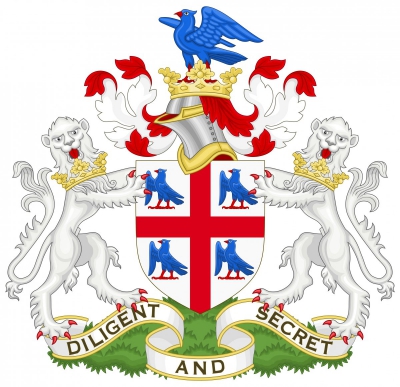A royal charter is a formal grant issued by a monarch under royal prerogative as letters patent. Historically, they have been used to promulgate public laws, the most famous example being the English Magna Carta (great charter) of 1215, but since the 14th century have only been used in place of private acts to grant a right or power to an individual or a body corporate. They were, and are still, used to establish significant organisations such as boroughs (with municipal charters), universities and learned societies.
Charters should be distinguished from royal warrants of appointment, grants of arms and other forms of letters patent, such as those granting an organisation the right to use the word "royal" in their name or granting city status, which do not have legislative effect. The British monarchy has issued over 1,000 royal charters. Of these about 750 remain in existence.
The earliest charter recorded on the UK government's list was granted to the University of Cambridge by Henry III of England in 1231, although older charters are known to have existed including to the Worshipful Company of Weavers in England in 1150 and to the town of Tain in Scotland in 1066. Charters continue to be issued by the British Crown, a recent example being that awarded to The Chartered Institute of Ergonomics and Human Factors, in 2014.
The College of Arms, or Heralds' College, is a royal corporation consisting of professional officers of arms, with jurisdiction over England, Wales, Northern Ireland and some Commonwealth realms. The heralds are appointed by the British Sovereign and are delegated authority to act on behalf of the Crown in all matters of heraldry, the granting of new coats of arms, genealogical research and the recording of pedigrees. The College is also the official body responsible for matters relating to the flying of flags on land, and it maintains the official registers of flags and other national symbols. Though a part of the Royal Household of the United Kingdom, the College is self-financed, unsupported by any public funds.
Founded by royal charter in 1484 by King Richard III, the College is one of the few remaining official heraldic authorities in Europe. Within the United Kingdom, there are two such authorities, the Court of the Lord Lyon in Scotland and the College of Arms for the rest of the United Kingdom. The College has had its home in the City of London since its foundation, and has been at its present location, on Queen Victoria Street, since 1555. The College of Arms also undertakes and consults on the planning of many ceremonial occasions such as coronations, state funerals, the annual Garter Service and the State Opening of Parliament. Heralds of the College accompany the sovereign on many of these occasions.
The College comprises thirteen officers or heralds: three Kings of Arms, six Heralds of Arms and four Pursuivants of Arms. There are also seven officers extraordinary, who take part in ceremonial occasions but are not part of the College. The entire corporation is overseen by the Earl Marshal, a hereditary office always held by the Duke of Norfolk.

1484Mar, 2
The College of Arms is formally incorporated by Royal Charter signed by King Richard III of England.
Choose Another Date
Events on 1484
- 2Mar
Royal Charter
The College of Arms is formally incorporated by Royal Charter signed by King Richard III of England. - 26Mar
Aesop's Fables
William Caxton prints his translation of Aesop's Fables. - 5Dec
Summis desiderantes affectibus
Pope Innocent VIII issues the Summis desiderantes affectibus, a papal bull that deputizes Heinrich Kramer and Jacob Sprenger as inquisitors to root out alleged witchcraft in Germany.

 English
English  español
español  français
français  português
português  русский
русский  العربية
العربية  简体中文
简体中文 